Knife review – An Elephant, a pug, a rat and a scandi
So while myself and my small team were cutting road through the National Park I decided it would be quite good fun to do a small 3 way knife review. But firstly more about the track:
We are applying for and building a remote Bush Camp (satellite camp to our main camp if you like). Being very much on the river we want to do something very different, so we identified a site of (allegedly) permanent water quite far from any existing roads… There are huge swathes of uncharted areas like this in the Kafue NP. Places where only a few game scouts and poachers (and of course animals) have been. Not surprising as the place is the size of Wales and has +/- 350 tourist beds in the ENTIRE park…
So I plotted out my route following higher ground and then we started slashing… thick grass. The whole idea is for a quick and dirty track so we can easily get in and evaluate the place, the game and hopefully stick up some tents! 8.7kms, 6 guys and 6 days. To say that my team can work is a bit of an understatement.
The place looks great and we are quite excited to spend some time there and evaluate it – i.e. camp, watch animals and birds and drink a glass or two in the evening while trying to ID whatever we can hear (I hope). Permanent water = animals. Especially as the year goes on and things get progressively drier.
My apologies, the photography is not great as Miombo Woodland is not a studio… dappled and uneven lighting is a challenge, and I was not spending time on nice shots.
Okay, the knives. So all three knives are what I would describe as unpretentious bits of kit that just cry out to be used. They are knives that you would carry on a hunt or a wilderness camping trip and trust to get the job done but not be worrying too much about scratching and generally working them. All quite different knives in their own way, so consider this a review from the field rather than a ‘versus’ type thing. Of course when doing this inevitably comparisons and judgments are made.
A RAT 4, a TLIM and a Serrata Pug. All real workers. There is a bit of an absence of natural materials! Its not that I don’t like antler, leather and all such like. It is just that for some reasons when it comes to knives I prefer man made materials… G10, Micarta and Kydex.
It is probably down to living in the tropics for years and finding anything leather covered in mould… Zambia is not really tropical but does have lots of moisture. I found that out the hard way leaving a lens in our vehicle during the height of the rains. Fungus on a treasured telephoto is no fun. Anyway I digress again.
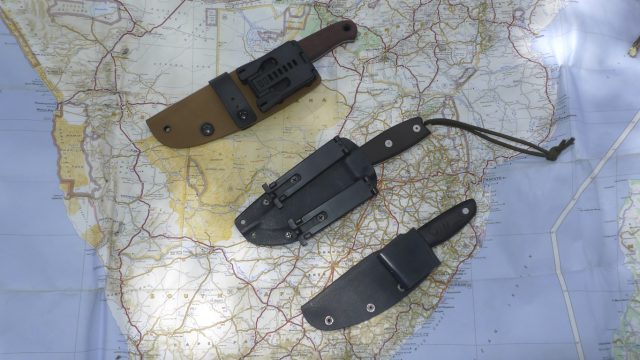
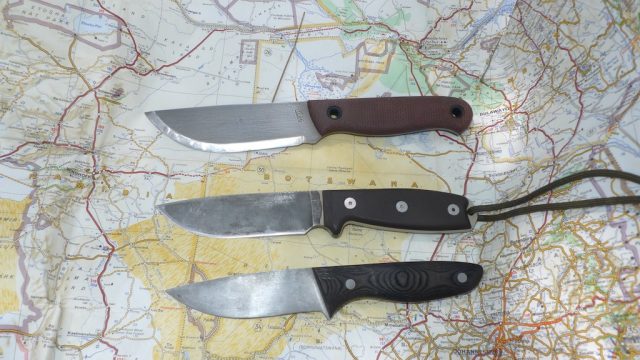
Let’s start with the RAT. RC4 to be precise.
General Info:
Most of us know this blade – it’s a very thick (about 5mm) ‘survival’ knife. 1095 steel, so nothing fancy. The blade is a full flat ground profile. But don’t think that this will make it a slicer! The coating has been removed and a bit of forced patina added.
I also ended up taking a big flat file to thin down the edge a bit and try to get a better cutting profile. After that (and lots of time with a DMT) it does perform better. I managed to put a load of nicks in the blade hacking roots out of an airfield, and it has taken a long time to get them out. This one was bought on British Blades. When I bought it, the knife was in like new condition.
It is a great hard user, but to be honest, they are fairly crude and their redeeming features are brute strength and no doubt the ESEE warranty! I will be honest – I could not have an ESEE as my only fixed blade, I find them too much of a compromise and as I have mentioned I have taken a fair bit of time and work to get this one actually cutting as I would like.
There was just something about the grind. If I were back in the UK, I would probably send it off for re-profiling. The handle is okay – just. Comprising fairly squared and thin micarta slabs. Some will find it too short. Aftermarket ones are available which look the business, but again you have to mess with something and spend quite a lot of money to get it to perform better.
At the price we have to pay for these in the UK, I find this a bit much. Last general point is that the blade has a choil (which I can take or leave) and the knife feels generally handle heavy. These retail now at HH for 130 GBP, which is quite a lot for a 1095 simple and rather crude knife.
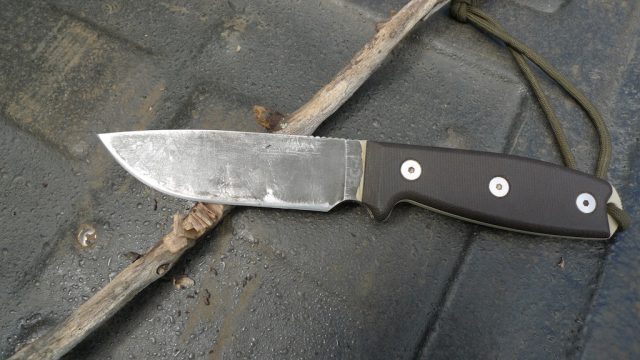
Sheath:
Great. A very good and well-made system. The molle locks or whatever they are called work fine for belt carry. It all makes for a very secure and low profile system. If I am being brutally honest it is probably the best thought out part of the knife!
Ease of sharpening:
As mentioned, for me this was a big fail. Yes, of course, the 1095 is easy to physically remove metal from. But out of the knives here it was the worst. Blade geometry just would not allow a decent edge. Maybe mine had a funny grind.
TLIM Camp Knife.
TLIM described this blade as a ‘camp knife.’ I find that there are several definitions of a camp knife – some people take it to be a big, large blade that you can build a camp with. In other words a big chopper type knife. Others take it to be a general purpose blade that you use in a camp. Capable of general tasks, food prep, etc.
Clearly, this blade is in the second category as the blade is 120mm long. It is 3mm thick 52100 steel, and the heat treatment is done in a salt bath to bainite.
I am no bladesmith but I do know that some people regard this as a very good treatment. Clearly, it involves some experience, hazard, special equipment.
The blade is scandi ground to zero. The handle is sandblasted micarta in a very attractive chocolate sort of color, and the handle length and profile is very, very comfortable.
It was and is the only scandi ground blade that I have owned, and I can see the pros and cons of this grind. As a complete package the knife performs better than the RC4. It feels like a higher quality blade, the balance is better (the balance point is basically at the front handle tube).
The handle comfort is way better than the RC4. Clearly, at 3mm thick it is a lot thinner than the RC4, but having watched some of TLIM’s videos I have little doubt that it is tough enough.
A good, solid knife. It cost me pretty much the same as the current retail price of the RC4 (including sheathing by Ru). To me clearly, this adds up to a better value for money package.
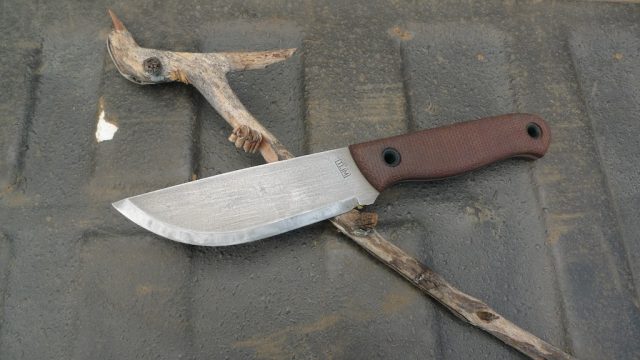
Sheath:
I bought the knife with no sheath and got Ru Titley to make one. He did a brilliant job in coyote brown with a large Tek Lok and even a IWB strap so that if I wanted to hang a pouch or whatever from the sheath I could.
The quality of materials and workmanship is very high; the sheath is like the knife – a professional, dependable item that looks like it comes from a production line. I mean this as a complement as there is a lot of handmade “custom” sheaths and knives that look… well…. “BluePeterish”.
Ease of Sharpening:
Hmm. So being a scandi ground blade the sharpening should be easy right? Actually, it is not that easy for me. I use a DMT diafold, and find that it is almost too small to lay the blade on and follow the grind. With a bigger bench stone it would be easy, but a pocket stone I find it a bit fiddly.
Clearly also being scandi ground to zero means removing quite a lot of steel in the sharpening process. If I hold the DMT and follow the blade profile, then I find there is a tendency to rock a bit and not be completely flat to the grind. To be honest, I think I prefer full flat to scandi grinds.
However, with care and a bit of time it does become frighteningly sharp. I cannot really imagine how someone with say a Spyderco Nilakka sharpens it if they want to keep the full zero blade profile. I did experiment with a secondary bevel, but then thought “what is the point” as I may as well make use of the scandi profile properly…
Serrata Pug:
This is a far more expensive knife that the other two. It is also markedly smaller. To be honest, if you are not into knives when you first see it you would probably think that it is the cheaper of the knives here. Just like if you are not into cars you would not believe the price of say a Caterham R500 or a Lotus Exige, after all, they only sit two people, are cramped and small… that pretty much says it all.
The performance of this knife is very, very high. More on that later. When you pick it up things change quickly. My better half who appreciates knives but is not fanatical immediately commented on how good it felt in the hand and how natural it feels. She liked it straight off, but only once in the hand.
It is a full flat ground blade which is made from investment cast 440 stainless steel. This results in a very toothy blade which has pronounced micro-serrations.
There has been loads written on British Blades about these knives, and I only bought this after a lot of reading about how different and good they are. The blade is thick. Very thick! The spine at the handle and the beginning of the blade must be 5mm. The grind, however, is very different to the RC4, being a much steeper grind so resulting in a nice thin edge that feels strong, but slices and cuts well.
For a blade thickness like this, it is very good at food prep. With meat, it cuts very nicely. The absence of odd shaped choils or ricassos means that cutting rope, for example, is instinctive and easy.
Fit and finish are of a very high standard; the blade has a very nice ‘misty’ acid etch which shows the patterns in the steel and the G10 handle is contoured and fills the hand nicely.
The whole thing is very well put together, and the design flows well. No odd angles are protrusions. Again with a car, you would probably mention ‘shark-like’ design characteristics. It does feel almost streamlined.
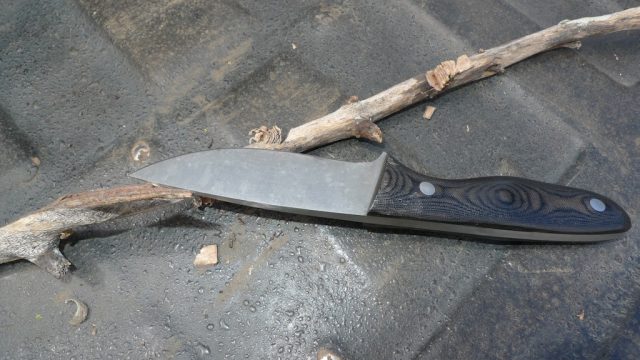
Sheath:
Depending on your viewpoint it is either an exercise in minimalism or a bit cheap… I don’t mind it too much as it works very well. Retention is good and it does everything I ask for. But I would prefer something with say a lock like a Tek-Lok and slightly thicker Kydex.
I guess that Stuart’s viewpoint is that the costs are in the blades, and as they are all designed to be used, then so long as the sheath is perfectly functional then job done. I can agree with the sentiments, it does work. It’s just not comparable to the other two sheaths.
Continuing with the car analogies – the sheath is a Subaru Sti Type UK. Not pretty, not made from particularly high quality or expensive materials. But durable and extremely capable. In reality, you don’t really ‘need’ more. You might want it, but you don’t really need it.
Ease of sharpening:
Very easy. Again a lot has been written about sharpening these Serratas. The key is to keep it to medium or even course sharpening media and forget all the stropping, polishing and mirror finish stuff. I use a DMT diafold, blue side or the course brown rods on a Lansky turnbox. Either way, I get an easy, toothy edge which cuts amazingly well.
The great thing is there is no faffing about. A few strokes and away you go and cut things. This suits me fine as I have to say I like sharpening but not that much!
Okay, a few tests:
Chopping up a tree. Yes, a real live tree (although small). Don’t worry, there are literally millions of them and the area don’t forget is the size of Wales.
Probably everyone in the UK who likes wool and making spoons could come here and go insane with their bushcraft stuff on live trees and not even make a dent.
The TLIM was a great wee chopper. Not that surprising. Handle length, balance, and the grind meant it was actually a big surprise. I would not mind using this to chop stuff as opposed to having to do it in some sort of emergency. Great stuff.
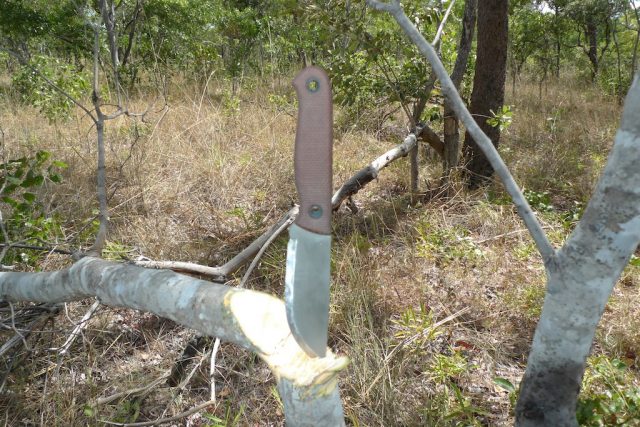
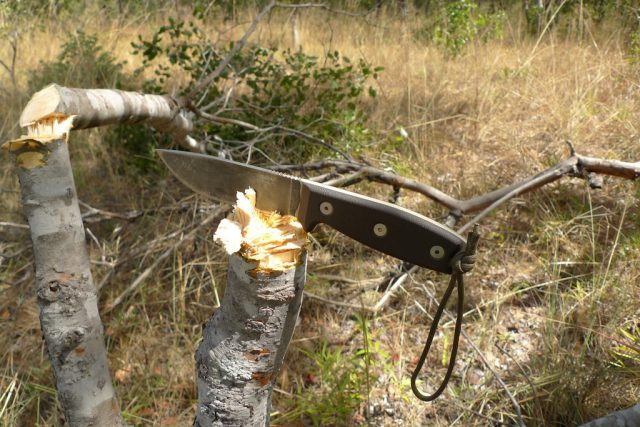
The Serrata Pug. I gave up! This test was just not fair to the knife. LOL. I could have done it, but why bother. It is not suited to chopping. End of. Even the photo didn’t work.
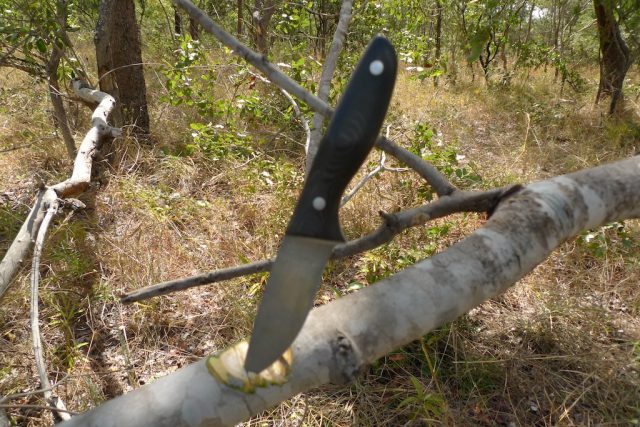
No batoning I am afraid. You are not supposed to Baton with a cast Serrata. I never do it anyway really. No firesteel action either as I don’t own one. Cutting rope now. This is horrible nylon ‘ski rope’ that has been lying in the back of the Hilux for a couple of weeks, so it is all full of sand and grit. The serrata demolishes it! One swipe and the rope is toast. The TLIM is a close second, and the RC4 takes a couple of saws at it. A clear victory.
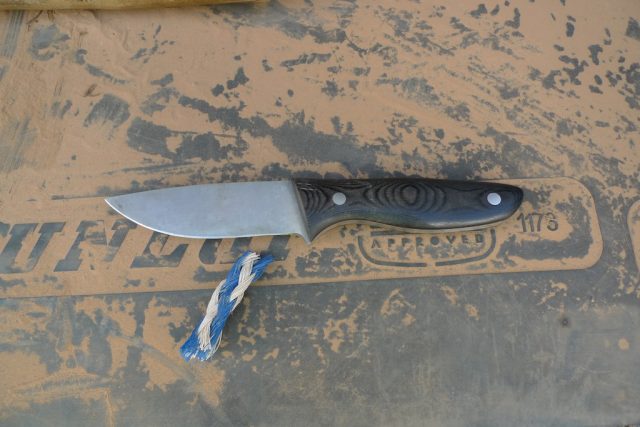
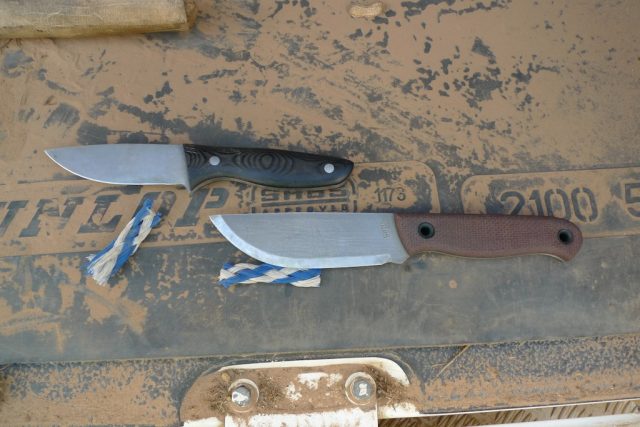
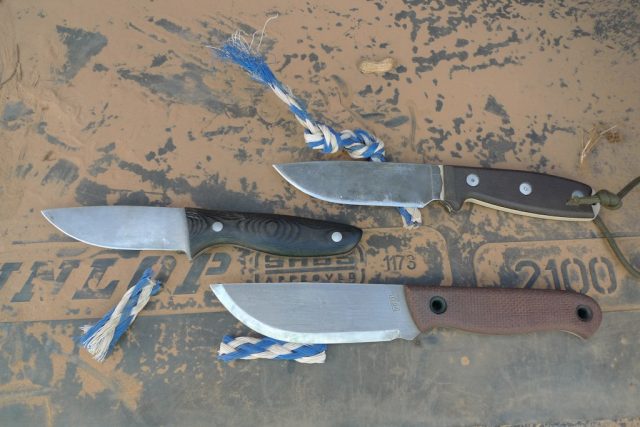
I made my sandwiches earlier in the day, so in the absence of cheese and onions for a demonstration of camp use I resort to trying to slice up elephant poo. Again this has spent a while in the back of my Hilux, so is gritty and dusty.
For those not familiar with elephant poo… they do not ruminate, so basically extract very little from their food. Most of it comes out the other end. And they eat a very weird diet.
Trees, branches, leaves, bark all goes in and mostly comes out! It smells really nice and herby when you burn it when it is dry (great natural mosquito coils!), but it is a total swine to cut up or slice. Imagine dry fibrous pieces all intertwined and caked together. I think I might be onto something here for knife testing!
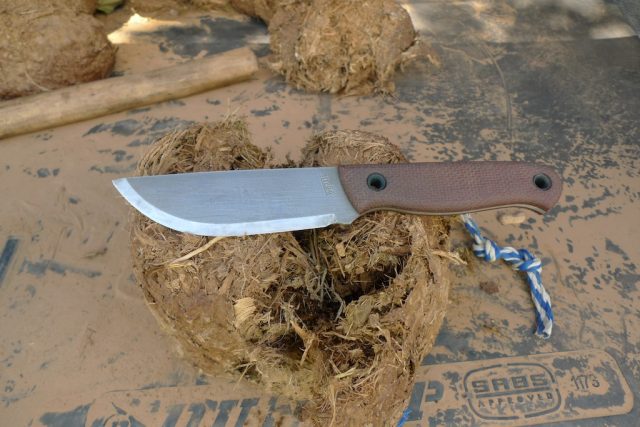
You might think it is odd, but I am always gathering good large firm boluses when out and about. The clear winner again is the Serrata. The TLIM did quite well, and the RC4 just cannot compare and sort of break the poo apart rather than saw and slice.
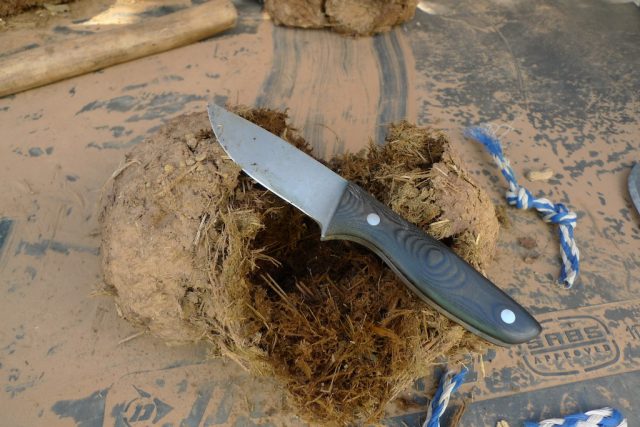
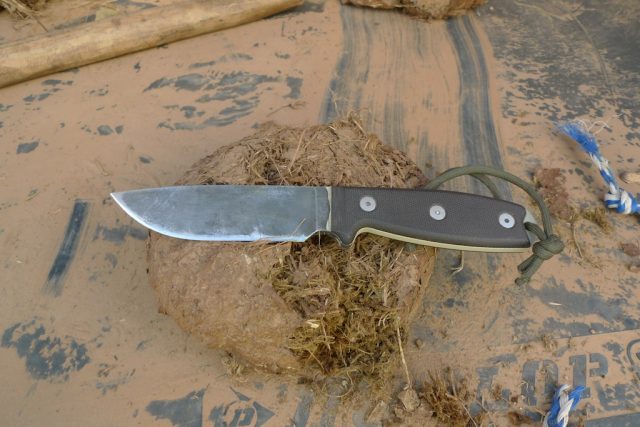
Then I did a few small cutting sticks – like feather sticks but not. Just repeatedly slicing into a small stick. Probably should have been trying feather sticks and spoon making, but I was making a road and feeling guilty. Besides I have plenty decent spoons and dry wood in Zambia outside the raining season is simply not an issue.
TLIM was the best (not surprising with the zero scandi eh!). Serrata a close second and the RAT actually also a close third. The RAT was actually pretty good here.
After this and for a final test I slice some paper. The clear winner is the TLIM, but to be fair I had been sharpening it before the tests.. and again I think the grind helped.
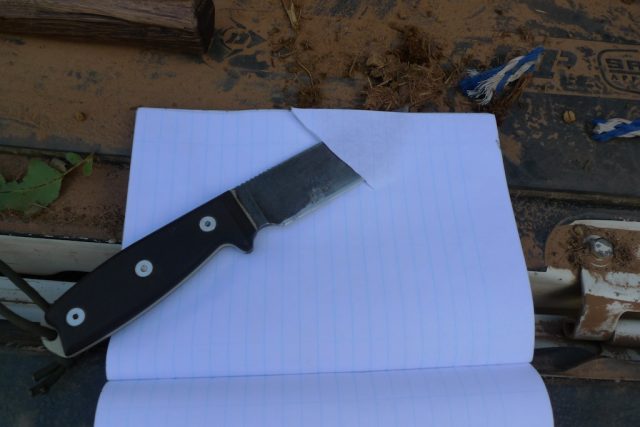
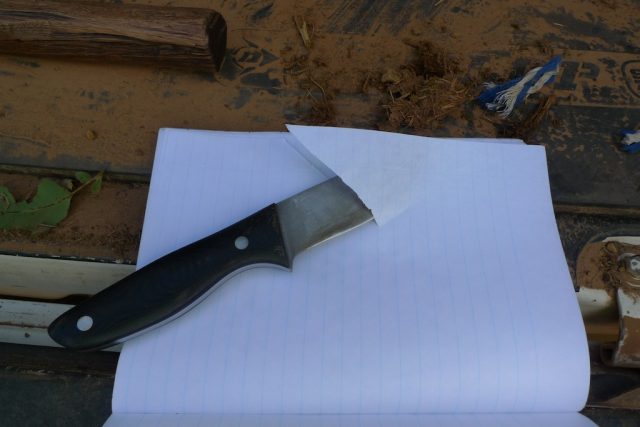
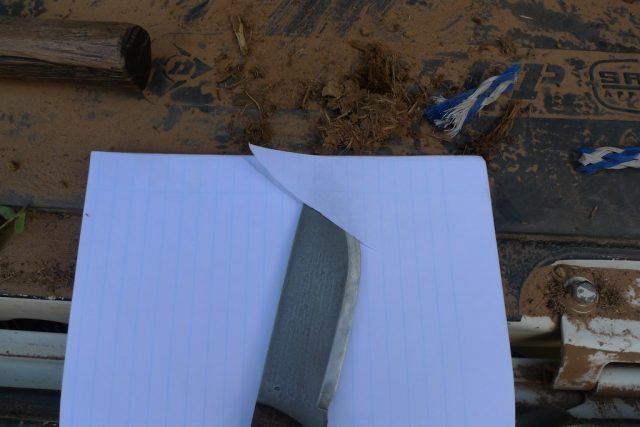
Conclusion:
All three are great knives. I carry them all on a rotation, but the one that is spending the most time on my belt is the Serrata. It is the perfect size and the ergonomics are totally superior. It doesn’t look to tactical, so guests don’t get all nervous or think I am some weird type.
And that is before even mentioning the cutting ability. It really is different. I think that Spyderco producing the Serrata without it being in the investment cast steel would be a total fail. Luckily they are, and I cannot wait to see the result.
Yes, I will buy one, or a full-size Serrata if it comes up. I also just bought a non-cast VG10 field knife from Stuart as an alternate daily user. The TLIM is also a great blade, and I would consider it as a fantastic wilderness knife that can do a bit of everything.
Good value for money, an interesting heat treat and a good steel. When you can get a custom blade and sheath like this from guys here on British Blades then I would go this route every time rather than buying a production fixed blade.
The RC4 is a good knife, solid and dependable with a great warranty. But it is way out of its depth here. I will confess here that after getting the TLIM and the pug the RC4 was actually going to be given to a friend. It got a second look in after I got all ‘medieval’ on it with the big file. It’s a good knife. But questionable value at 130 quid.
Thanks for bearing with my digressions if you made it this far.
I am lucky to be able to carry any of them at any time.
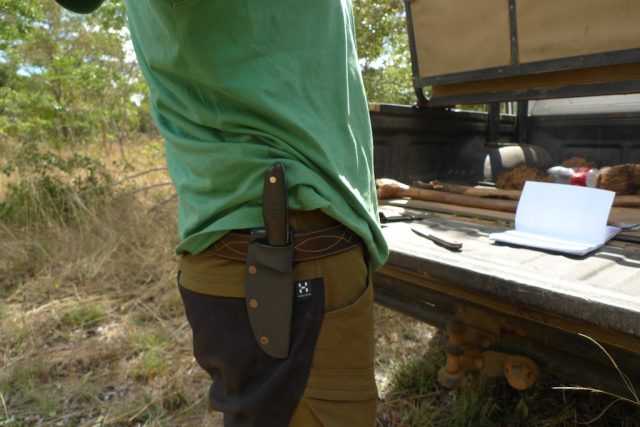
Thanks to Africanex and ©BritishBlades for allowing us to use this article
If you have any comments then please drop us a message on our Outdoor Revival facebook page
We love reviews on Outdoor Revival and we’ll be bringing you a lot more over the coming months, if you enjoy reviewing kit and would like to submit reviews to us, let us know on our FB page, we’re happy to receive any article or review submissions, we’d love to hear from you.





